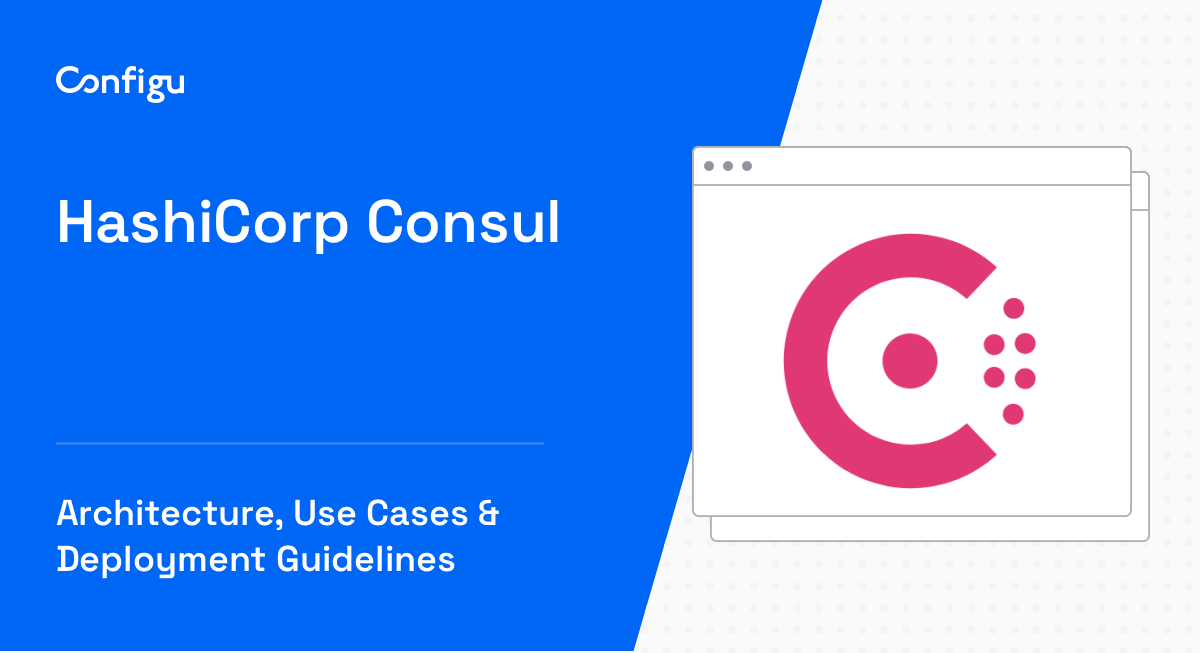What Is Configuration Management in Software Engineering?
Configuration management in software engineering refers to the systematic approach to managing changes to configuration in software applications. It is crucial for maintaining the integrity and traceability of software products, helping manage complexity and ensure consistency in performance and functionality. It also reduces security risks that can stem from unauthorized or unintended configuration changes.
The primary goal of configuration management is to provide a stable, reliable software environment, facilitating teamwork and communication, and enabling the early detection and correction of errors.
This is part of a series of articles about Configuration Management
In this article:
How Does Configuration Management Fit into Agile, DevOps, and CI/CD Practices?
Configuration management plays an important role in modern software development practices such as agile, DevOps, and Continuous Integration/Continuous Delivery (CI/CD).
Agile Configuration Management
In agile software development, which champions iterative development, configuration management helps in managing the frequent changes made to software configuration. It allows teams to keep track of all the changes made during each iteration and ensures that the final product is consistent with the initial requirements.
Agile teams typically use version control systems and other tools to manage iterative development of their source code. However, version control and collaboration over configuration files is an emerging trend. By versioning configurations, teams can improve visibility, consistency, and quality of deployed software.
DevOps Configuration Management
In DevOps, configuration management is essential for maintaining the health and stability of the software development and operations pipeline. It helps in automating deployment, scaling, and management of applications, reducing manual errors and increasing productivity.
DevOps configuration management tools such as Puppet, Ansible, and Chef can automate the entire software delivery process, from code integration and testing to deployment, monitoring, and feedback. They help ensure consistency in the application environment, irrespective of the number of developers working on the project or the complexity of the software.
CI/CD Configuration Management
In the CI/CD pipeline, configuration management plays a key role in managing the configurations of development, testing, and production environments. It ensures that the software works consistently across all environments and that any changes made are correctly reflected.
CI/CD tools like Jenkins, Bamboo, and TeamCity can fully automate the build and deployment process. By integrating configuration management into the CI/CD pipelines, teams can ensure they apply the same level of attention and the same quality standards to configuration files as they do to application code.
Key Steps of a Software Configuration Management
The configuration management process should include the following steps.
1. Version Control and Baseline
Version control is the process of managing and tracking changes to configuration files and environment variables. This includes keeping a record of all modifications, additions, and deletions to these artifacts. It is a critical best practice to ensure all configuration files are checked into a source control system, alongside the application code.
A baseline is a reference point against which all changes are measured. It represents a stable state of the configuration files at a particular point in time. Establishing a baseline is important as it provides a point of comparison for future changes, enabling the team to understand what has changed, why it has changed, and what impact the change has had.
2. Change Control
Change control involves managing and controlling changes to the configuration items. This includes assessing the impact of proposed changes, authorizing or rejecting changes, and implementing approved changes.
A simple way to implement change control is to use Git pull requests to make changes to configuration files. This ensures that every change to a configuration file is reviewed by other team members, and committed to source control with a meaningful message indicating the nature of the changes. Alternatively, teams can use configuration management platforms that can provide more advanced tracking and visibility over configuration files and changes.
Change control ensures that all changes are carefully evaluated and controlled. This helps prevent unnecessary or harmful changes and ensures that all approved changes are implemented correctly and effectively.
3. Audits and Reviews
Audits and reviews are critical components of the configuration management process, ensuring that the software configuration remains aligned with defined standards and requirements.
During audits and reviews, development teams assess the current state of software configurations against the baseline to identify discrepancies, unauthorized changes, or deviations from best practices. This step is vital for maintaining the integrity of the software environment, ensuring that it is secure, efficient, and compliant with regulatory standards.
Related content: Read our guide to configuration management software
Why Use a Configuration Management Platform?
Many organizations use a dedicated configuration management platform instead of managing configurations manually or via ad-hoc processes. Here are the key benefits of using a platform:
Ensures System Consistency
Configuration management platforms ensure uniformity across all system environments. This consistency reduces compatibility issues, simplifies troubleshooting, and makes software deployments predictable and less error-prone. Teams can confidently replicate environments, knowing each setup reflects the expected state accurately.
Moreover, this uniformity facilitates smoother transitions between development stages, from coding to testing to production. Consistent environments mean developers and operations teams spend less time fixing environment-specific issues and more time delivering value.
Enabling System Replication
Effective configuration management eases the replication of systems and environments. Whether scaling up operations, setting up new instances, or creating development and testing environments, the process becomes streamlined and reliable. Replication based on well-defined and managed configurations ensures that each copy precisely mirrors the original blueprint.
This capability also allows for efficient testing of system changes in isolated environments before they are rolled out to production, minimizing risks to business operations.
Enhancing Security Through Controlled Changes
A configuration management platform enhances security by meticulously controlling changes to the system. It ensures that only authorized modifications are made, preventing unauthorized access or alterations that could introduce vulnerabilities. This level of control significantly reduces the risk of security breaches.
Additionally, the audit trails created through managed changes support compliance with regulatory standards. They provide clear evidence of the system’s integrity and the measures taken to safeguard data, which is crucial for meeting industry regulations and building trust with stakeholders.
Streamlining System Recovery and Backup
Configuration management platforms streamline system recovery and backup processes. By maintaining detailed records of system configurations and enabling easy replication, they facilitate quick restoration after failures or data loss incidents. This capability is essential for minimizing downtime and preventing loss of valuable data.
Automated backups, aligned with current configurations, ensure data integrity and quick recovery. This resilience is critical for maintaining business continuity, safeguarding against potential losses, and ensuring systems can be promptly brought back online after unexpected events.
Key Features of Software Configuration Management Platforms
Automated Configuration Tracking
Automated configuration tracking is a key feature, significantly reducing manual tracking efforts. It ensures accurate, real-time monitoring of system states and changes, enhancing visibility across all configuration items. This automation helps in identifying discrepancies quickly, enabling timely corrections.
Automated tracking also supports effective version control by continuously documenting the evolution of system components. This capability is vital for understanding the impact of changes and maintaining system reliability throughout its lifecycle.
Version Control
Version control allows development teams to save, retrieve, and collaborate on various versions of code and configurations, facilitating parallel development and minimizing conflicts between changes.
By securely storing historical versions, version control systems enable quick rollbacks to previous states if needed, ensuring stability and continuity. They also provide a clear audit trail of modifications, supporting transparency and accountability in the development process.
Change Management
Change management features help manage adjustments to software and configurations systematically. They provide tools for tracking change requests, assessing impacts, and ensuring that changes are implemented smoothly. These features ensure that modifications align with project goals and don’t introduce new risks.
Effective change management enhances collaborative efforts, keeping all stakeholders informed and involved in decision-making processes. It ensures that changes are evaluated, approved, and documented, maintaining system integrity and alignment with strategic objectives.
Audit Trails
Audit trails systematically record changes, providing a detailed history of who made what change and when. This transparency is crucial for compliance, troubleshooting, and understanding the evolution of a system.
Audit trails help identify unauthorized changes or errors quickly, facilitating corrective actions. They also play a significant role in security and regulatory compliance, offering clear evidence of adherence to established processes and standards.
Reporting and Analytics
Reporting and analytics capabilities offer insights into the configuration management process, highlighting trends, issues, and opportunities for improvement. These tools provide valuable data for decision-making, allowing teams to optimize processes and systems based on accurate, timely information.
Advanced analytics can predict potential issues before they impact the system, enabling proactive management. Reporting tools also facilitate communication with stakeholders, providing clear, concise information on system status, change histories, and compliance positions.
Related content: Read our guide to misconfiguration
Configu: The Leading Configuration Management Platform for Your Applications
Configu is a configuration management platform comprised of two main components, the stand-alone Orchestrator, which is open source, and the Cloud, which is a SaaS solution:
Configu Orchestrator
As applications become more dynamic and distributed in microservices architectures, configurations are getting more fragmented. They are saved as raw text that is spread across multiple stores, databases, files, git repositories, and third-party tools (a typical company will have five to ten different stores).
The Configu Orchestrator, which is open-source software, is a powerful standalone tool designed to address this challenge by providing configuration orchestration along with Configuration-as-Code (CaC) approach.
Configu Cloud
Configu Cloud is the most innovative store purpose-built for configurations, including environment variables, secrets, and feature flags. It is built based on the Configu configuration-as-code (CaC) approach and can model configurations and wrap them with unique layers, providing collaboration capabilities, visibility into configuration workflows, and security and compliance standardization.
Unlike legacy tools, which treat configurations as unstructured data or key-value pairs, Configu is leading the way with a Configuration-as-Code approach. By modeling configurations, they are treated as first-class citizens in the developers’ code. This makes our solution more robust and reliable and also enables Configu to provide more capabilities, such as visualization, a testing framework, and security abilities.



